Cheese is a dairy product known to mankind for millennia. In the world, we have thousands of types of cheeses. Thracians extracted milk into various products.
Cheese is produced by solidification of milk by special technology. In general, the process involves that preheated milk is cooled and leavens using yeast for cheese and rennet. Next step is to Strain, then left to mature for a minimum of 45 days, getting salted and packed in boxes containing brine. Type differentiate depending on the milk used, as are cow, sheep, goat, buffalo or mixed, which is made of two types of milk and has different nutritional characteristics.
History of cheese
It is assumed that the production of cheese began as early as 8000 years BC, when the first domestic sheep showed. At first cheese was made in the Middle East and Central Asia. There Turkic tribes invented a way to store products in bodies of killed animals. To preserve the milk for longer, they kept it in the belly of dead animals and thus had invented the first curd. The first archaeological evidence for the production of cheese were discovered during excavations in Egypt and dates back to about two thousand BC. In ancient Egypt cheese was very salty to withstand hot and dry climates, while in Europe, latitudes allowed different types of cheese.

It is believed that the classic white feta was invented by European monks after the collapse of the Roman Empire. As of today only in the UK you can find 700 different varieties of cheese in Italy and France, there are about 400 varieties. Today, most cheeses are produced annually in the states Wisconsin and California in the U.S., who are world leaders in the production of cheese. Leaders in the consumption of cheese per capita are the Greeks and French, and Italians are famous with various aromatic cheeses.
Cheese is generally made from cow's, sheep's and goat's milk, but this product is made from milk of other animals too. Sweden produces unique elk cheese, the price per kilogram is $1.000. The most expensive cheese in the market is of donkey milk. Price exceeds € 1, 000 per kg, because to make just 1 pound, 25 liters donkey milk are needed, which is extracted from one donkey in two years.
Types of Cheese
Brie, Camembert, Gorgonzola and Roquefort are called aromatic cheeses. They have a unique flavor due to mold. In France and Italy fungus growth technology was perfected over centuries-old traditions. These cheeses are divided into three types - white mold, blue and so-called washed rind. France is one country where we produce most cheeses, each French province has typical local cheese. Roquefort is the first French cheese officially protected by law. The original product "Roquefort" is only cheese aged in natural caves on the eponymous French region. Another kind of smelly cheese is Gruyere, which is produced in France and Switzerland. Camembert is a soft white cheese with a thin crust, which is generally done only in Normandy. Bree is also a traditional French cheese.

Specific cheeses produced in Switzerland are with many holes. They are produced during fermentation when carbon dioxide releases. The larger holes are, the more expensive cheese is, due to a long period of maturation. Emmental is a Swiss cheese and its giant flattened disk is done manually. The favorite of millions of people worldwide mozzarella Italian cheese is even made from buffalo milk. But during the war the Nazis killed many buffaloes and Italians came to be made to cow's milk. Mascarpone, which is indispensable in the preparation of Tiramisu is the most oily Italian cheese. Parmigiano Reggiano/Parmesan cheese is a hard, very fragrant cheese made from skimmed cow's milk. Cuts very rough with a device similar to a chisel.
The British also have many of the world’s famous cheeses, like cheddar. The longer the ripening, the flavor is sharper, and the price jumps. Gouda is produced in the Netherlands and is considered one of the oldest cheeses. The young cheese Gouda is mild, creamy, even with a slight creamy taste. The more mature, the more spicy and rich its taste is. Last but not least we have to mention vegetarian cheese tofu, which is made from soy milk. Produced by soy beans are soaked, crushed, blended and the cooked mixture is filtered. Breakaway soy milk thickens into a cheese that is pressed.
Composition and nutrients in cheese
Cheese is a food that contains proteins, salts and minerals like zinc, magnesium, phosphorus. It is rich in vitamins A, E, B1, B2, B12, D and PP, full of calcium, essential for bones and teeth and proteins. Depending on the type of milk from which the cheese made, proteins and fats vary widely. Depending on the method of manufacture cheese contains 10 to 30% proteins. The most valuable cheese are essential amino acids such as leucine, isoleucine, lysine, methionine, cystine, phenylalanine, tyrosine, tireonin, tryptophan and valine.
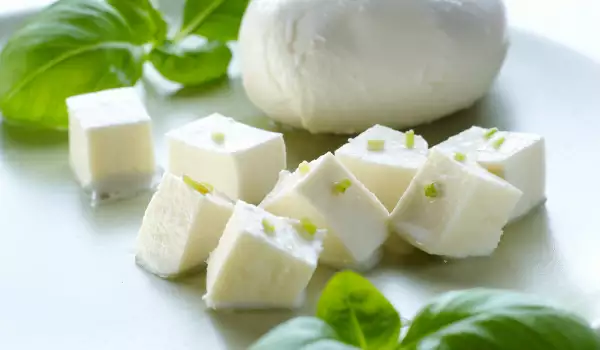
When producing, about 70% of calcium phosphate salts in milk are retained in the cheese. Lipid percentage varies from 10 to 30% of its total mass, they determine its fat content. The taste of the cheese is determined by lactic acid fermentation of lactose that produces both lactic, propionic, acetic acid and aromatic substances.
Soy cheese is a product with many advantages. It is rich in B vitamins: B1 - 0, 06 mg, B2 -0 03 -0 mg, B3 10 mg source of phosphorus - 126 mg Magnesium - 111 mg Potassium - 42 mg Sodium - 7 mg. Soya cheese contains a high amount of linoleic acid, which contributes to the destruction of harmful cholesterol and other fatty deposits in blood vessels. After eggs it has the most licitin, strengthening the nervous system.
Selection and storage of cheese
When you buy white cheese in bulk, make sure its surface is yellowish. Cheese is a great product shelf life if stored properly. White cheese is better to put in its own brine, and if it does not, soak it in water until it is covered and add a pinch of salt. The cheese becomes tastier if removed from fridge at least one hour before serving it. To store it best, wrap it in foil and put in the refrigerator compartment where the temperature is highest.
Aromatic cheeses should also be stored carefully. They are stored in a well-ventilated with 85-90% humidity and temperatures around 10 degrees. Also wrapped in foil, but otherwise the smells will blend with other products in the refrigerator. There is a variant in which mold spores from some cheese permanently integrate into the refrigerator to "pin down" the other products. Cheese is a product of living organisms in it and should not be deprived of air. Of course, if you keep it uncovered, it will dry.

Culinary use of cheese
Thousands of types of cheese in the world differ from the type of milk - raw, skimmed or pasteurized, and the animals - cows, goats, sheep, buffalo, horse or camel. Feta cheese is a tribute to both savory dishes and salads, and for pies, crackers and other snacks.
Traditional balkan salad would not be the same without the crumbled feta on it. Cheese is used alone as an appetizer or added to other products crumbled and eggs, mayonnaise, chopped vegetables. Crumbed Cheese is one of our favorite appetizers, and if you prepare plate of cheese with honey and walnuts will add a touch of sophistication.
Aromatic cheeses match best with grapes, apples, walnuts, figs, melon and avocado. They are suitable for combination with white wine, also has a pronounced flavor. The more mature cheese is the more mature the wine must be. The label requires to eat soft cheese with a knife and place on a piece of bread without smearing. Hard cheeses should be eaten with a knife and fork.
Benefits of cheese
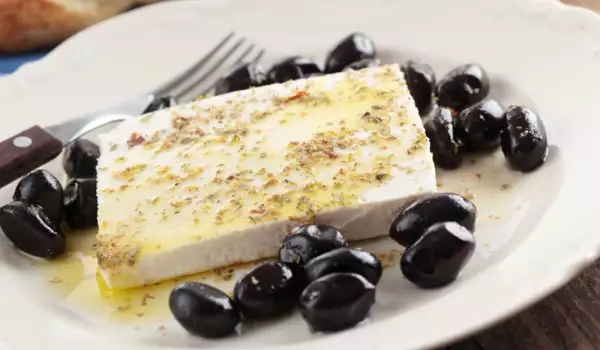
Several advantages of cheese makes it an indispensable food. Milk protein contained in it is easily assimilated by the body so it is actively involved with those suffering from gastrointestinal and liver diseases. Vitamin D is needed to strengthen bones and plays an important role in the metabolism of trace elements in the body calcium and phosphorus. Obtaining it is especially important during the winter months and the cheese is excellent for this purpose. Vitamin PP in turn supports the functioning of nerve cells, keeping the skin and digestive system. The high levels of calcium are important for well-being and motor development, and human teeth.
Especially important characteristic of cheese is that it contains the amino acid tryptophan, which is proven to eliminate stress and normalize sleep. Cheese stimulates the appetite, stimulates digestive juices and absorption. Tryptophan is one of the essential amino acids that the body uses to synthesize proteins. When you consume foods rich in tryptophan, it is converted into vitamin B3 in the liver, leading to balanced levels of this vitamin in the blood stream.
Tryptophan is a precursor for serotonin. Mineral salts in the cheese make it an important food for children, teenagers, pregnant women(helps in proper development of the fetus), lactating mothers and even adults who according to recent polls, the cheese can prevent the occurrence of sclerotic conditions.

Only 150 grams of cheese a day meets the needs of the body of minerals. It is very useful in fractures and tuberculosis. Unlike other dairy products, it contains almost negligible amounts of lactose. This makes it ideal food for people who can not tolerate lactose foods and still need to obtain the necessary amounts of calcium.
The high protein content in cheese helps a person to quickly increase and thus accelerates its metabolism. Mature cheese hinders the process of decay bacteria in the intestine, increases the secretion of gastric juice and improves appetite. According to Finnish researchers, cheese can help preserve and strengthen the immune system in the process of aging for probiotic bacteria.
Cheese is good chronic gastritis associated with reduced acidity of gastric secretion in acute and chronic enterocolitis in prevailing decay processes, diseases of the liver and bile in appetite, etc. The high content of amino acids, calcium, and phosphorus prevents rickets, osteoporosis.
Dangers of cheese
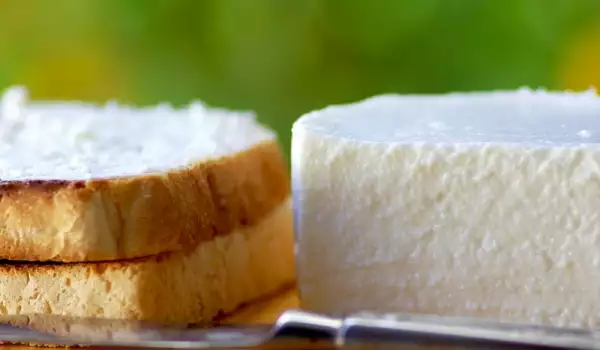
Risk to human health lies in the consumption of low-quality cheese manufactured mostly using unpasteurized milk. It can increase the risk of serious infection with infectious agents, leading to the spread of listeriosis, brucellosis, salmonellosis and tuberculosis.
British Dietetic Wayne Laura believes that certain types of cheese are very salty and greasy and they should not be overdone. Cheese is the only product that can cause headaches because it contains tyramine. This is a natural substance that accumulates during the long storage products. In large quantities, it can cause hypertension. Most tyramine have cheddar, feta, mozzarella, and parmesan cheese. Under normal conditions it breaks in the mucosa of the enzyme monoamine oxidase group.
Some drugs destroy the action of these enzymes in the intestinal mucosa, resulting in no degradation. It is sucked in large quantities in the blood, which leads to severe hypertensive crisis. Eating cheese is not recommended during treatment with drugs such as iproniacid, etc.
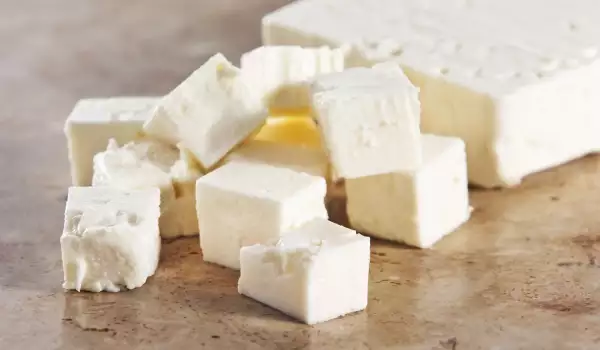






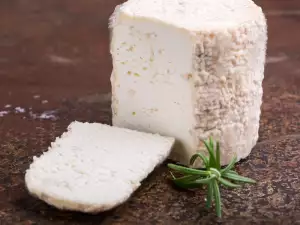



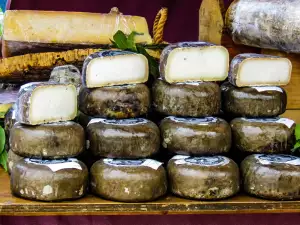


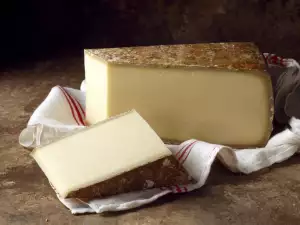




Comments